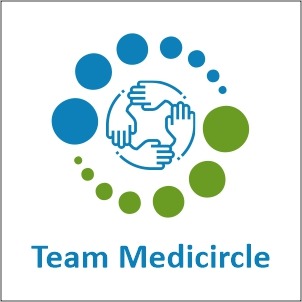In a stark warning during his 119th Mann Ki Baat address last month, Prime Minister Narendra Modi spotlighted India’s deepening obesity crisis, revealing that cases have doubled in just a few years, with children emerging as the most vulnerable group. His radio programme stressed upon not just the rise in numbers, but how younger generations are being ensnared by this silent epidemic. Obesity is no longer an urban or adult concern—it’s creeping into rural homes and school corridors.
India is battling a silent health crisis as obesity rates surge across all age groups, driving an alarming rise in early mortality linked to diabetes, cardiovascular diseases, and cancer. Recent data from the National Family Health Survey (NFHS-5) reveals that nearly 24% of women and 22.9% of men are now classified as overweight or obese—a sharp jump from 2015-16 figures. Experts warn that this trend, compounded by poor diets and sedentary lifestyles, threatens to reverse decades of progress in public health.
India currently leads globally in the number of individuals with diabetes, with an estimated 101 million affected. The burden of cancer is also on the rise, with cases projected to increase from 1.46 million in 2022 to 1.57 million by 2025, as per the Indian Council of Medical Research-National Cancer Registry Programme. Cardiovascular diseases remain among the leading causes of death and disability, reportedly affecting Indians at least a decade earlier than in other countries.
“A few years ago, heart attacks struck Indians in their late 50s—already a decade younger than Western peers due to genetic predisposition. Today, obesity has dragged that age down to the 30s. It’s not just a link. Obesity is turning genetic vulnerability into a giant non-communicable disease burden. Visceral fat disrupts metabolism, clogs arteries, and overloads organs,” said a Dr. Sukriti Bhalla, Senior Consultant, Cardiology, Aakash Healthcare.
Children in the Crosshairs
This upward trend extends to children as well. The percentage of children under five who are overweight increased from 2.1% to 3.4% between 2015-16 and 2019-21, according to NFHS data. Projections are even more alarming for older children; the World Obesity Atlas 2022 estimates that by 2030, 10.81% of children aged 5 to 9 and 6.23% of those aged 10 to 19 in India will be obese.
“Kids are consuming more sugary snacks and screen time than vegetables and playtime. Every day, I see children as young as six with weight-related issues including fatigue, joint pain, even early signs of insulin resistance. Schools serve fried snacks in canteens and have no frameworks to ensure balanced meals, while parents, overwhelmed by work or misinformation, often dismiss subtle warnings like sudden weight gain or reluctance,” said Dr Sunita Sharma, Senior Consultant, Paediatrics at PSRI Hospital.
Obesity Bridging Rural-Urban Divide
Contrary to stereotypes, obesity is no longer confined to the affluent. Low-income households reliant on subsidized rice and wheat often lack access to proteins and vegetables. A 2022 study in Nature noted that 56% of India’s rural population now consumes packaged foods weekly, up from 42% in 2015.
“Carbs are cheap; nutrients are a luxury. Rural obesity is climbing as processed snacks invade villages,” said Dr. Sandeep Kharb, Senior Consultant, Endocrinology, Asian Hospital. “Low-income households, especially those relying on the public distribution system, tend to consume more carbohydrates through staples like rice and wheat. We can instruct people to eat better, but it is not possible if these foods are unaffordable. Diets among poorer families are often deficient in iron and proteins, as nutrient-rich foods like fruits, vegetables, pulses, dairy, and animal-based products are expensive.”
Cities: Epicenter of the Crisis
Dr. Neeraj Rayate, Consultant, Bariatric Surgery, Consultant, General Surgery, Jupiter Hospital, Pune observed a significant rise in obesity rates in urban areas. “Cities are drowning in ultra-processed foods, pollution, and desk-bound jobs. This trifecta is fueling inflammation, insulin resistance, and fat accumulation. This surge has led to a noticeable increase in related conditions, with every third person with obesity suffering from acid reflux.”
Brain Health at Risk
Emerging research highlights how junk food alters brain function, accelerating metabolic disorders. A 2023 German study found that even short-term consumption of processed foods like chips and chocolate disrupts insulin signaling in the brain.
“This new study indicates obesity starts in the brain. The dysfunction can hijack appetite regulation, creating a vicious cycle of overeating and weight gain. The brain’s adaptation to unhealthy diets may explain why obesity is so hard to reverse,” says Dr. Praveen Gupta, Principal Director & Chief of Neurology, Fortis Hospital.
Experts shared that the obesity epidemic requires a multifaceted approach, including public awareness campaigns, policy interventions to make healthy foods more affordable and accessible, and promoting physical activity across all demographics. "Without immediate and concerted efforts, the rising trend of obesity in India is poised to lead to increased early mortality and a substantial burden on the healthcare system," commented Dr. Aakaar Kapoor, CEO and Lead Medical Advisor: City X-Ray and Scan Clinic Founder and Partner: City Imaging & Clinical Labs

 This new study indicates obesity starts in the brain. The dysfunction can hijack appetite regulation, creating a vicious cycle of overeating and weight gain. The brain’s adaptation to unhealthy diets may explain why obesity is so hard to reverse
This new study indicates obesity starts in the brain. The dysfunction can hijack appetite regulation, creating a vicious cycle of overeating and weight gain. The brain’s adaptation to unhealthy diets may explain why obesity is so hard to reverse










.jpeg)


.jpeg)
.jpeg)
.jpeg)
_(1).jpeg)

_(1)_(1)_(1).jpeg)
.jpeg)
.jpeg)
.jpeg)








.jpeg)
.jpeg)